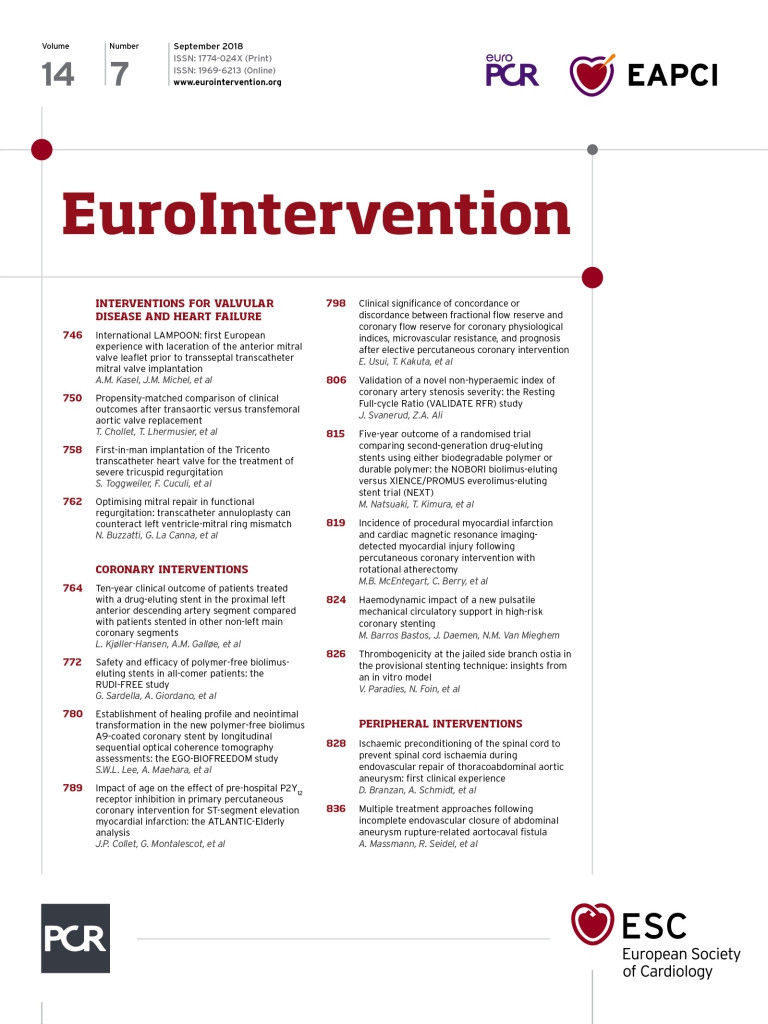
We read with interest the article from Asano et al1 reporting the functional equivalence, as measured by quantitative flow ratio (QFR, a novel adenosine-free angiography-based fractional flow reserve [FFR]), of two tested stents. This is a substudy of the simultaneously published PIONEER randomised trial2, which failed to demonstrate non-inferiority in terms of late lumen loss of a novel sirolimus-eluting stent with a biodegradable PLGA-polymer coating and an electrografting base layer on a thin-strut (80 µm) cobalt-chromium platform (BuMA™; SINOMED, Tianjin, China) when compared to the contemporary durable polymer zotarolimus-eluting stents (ZES). The rate of restenosis (>50%) and 12-month clinical endpoints were similar. This PIONEER QFR substudy analysed post-implantation and nine-month follow-up coronary angiograms of the two randomised groups showing similar mean QFR values and QFR gradients across the device (ΔQFR) at nine months. The authors claimed physiologic equivalence of the BuMA stent and ZES despite the differences found in late lumen loss in the primary analysis.
We are glad to see that the incipient but validated new tool QFR is starting to extend into different fields of research. Nevertheless, QFR was used in this study to evaluate a particular mild degree of stenosis, i.e., nine-month in-stent diameter stenosis (DS) of 19.2±12.0% and 16.1±12.6% in the BuMA and ZES groups, respectively (p=0.09), and significant restenosis (DS ≥50%) in only three and four patients, respectively. QFR is an FFR emulator, and thus its application relies on evidence derived from FFR studies, which were carried out on intermediate stenosis on the grounds of the flow (and pressure) disturbance caused by a certain degree of stenosis3. These studies included intermediate lesions encompassing the range of flow-limiting stenoses. In the PIONEER QFR study, the physiologic similarity between the two groups is unlikely to be a good parameter of device performance. Any conclusions derived from analysing differences within the range of very mild stenosis, such as in this study, lack evidence to favour one device against another. We therefore found that using QFR is inadequate in this context.
Moreover, all evidence supporting QFR as a substitute for FFR4 is derived from trials where QFR was tested on intermediate de novo coronary stenosis and no data regarding its performance in mild in-stent stenosis are available at present.
In conclusion, QFR or other indices that are designed and validated to evaluate intermediate, visually ambiguous stenoses cannot be reliable substitutes for lumen loss as standard endpoints in stent trials.
Conflict of interest statement
The authors have no conflicts of interest to declare.

